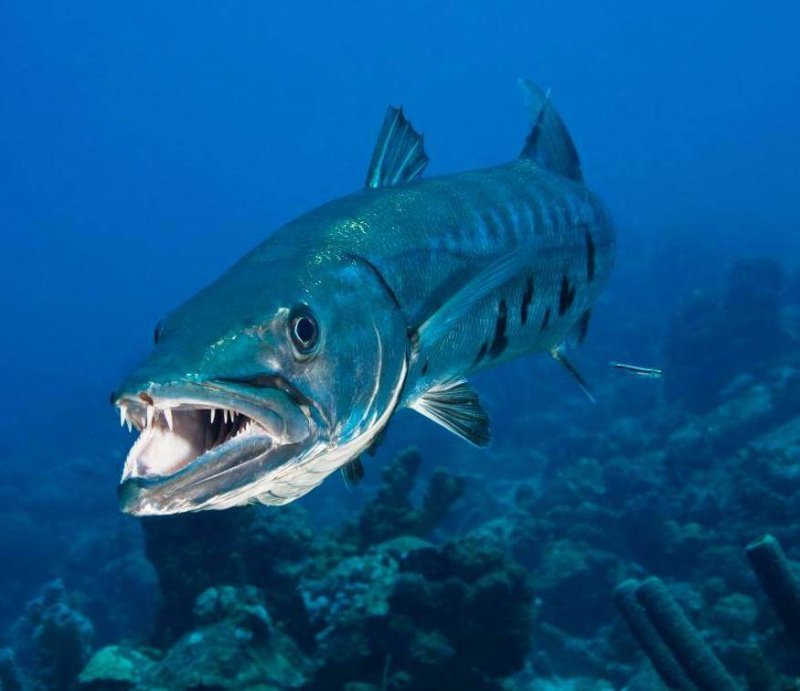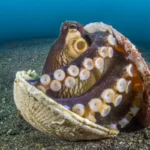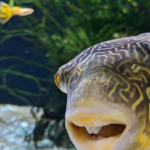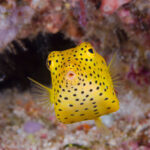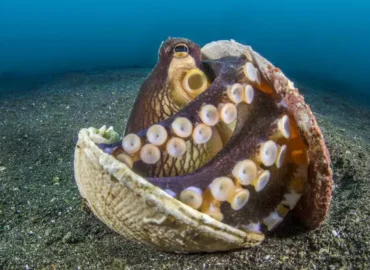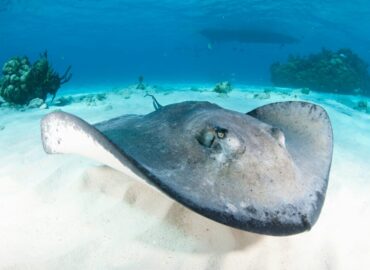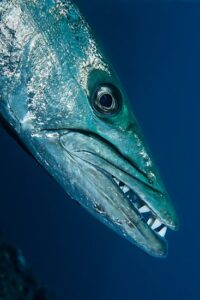
Just like sharks and moray eels, barracudas enjoy a bad reputation due to their not exactly friendly appearance: their smile is in fact decorated with small sharp teeth that emerge from the half-open mouth and their inquisitive gaze seems to study our every movement in the water.
The barracuda family (fam. Sphyraenidae) has 28 species, grouped within a single genus (Sphyraena). Characterized by the unmistakable elongated shape and the peculiar dark streaks on the body, these silver missiles live in tropical and subtropical waters around the world, up to depths of 100m.
Designed for speed
The barracuda body resembles the shape of a bullet: long, tapered and with clean lines, it has been shaped by evolution to be extremely hydrodynamic and easily overcome the resistance of water while swimming. The head of these animals is pointed and has a prominent lower jaw, which is longer than the upper jaw. The wide mouth, which extends along the entire length of the head, is equipped with sharp teeth that give the barracuda’s smile a very uneasy appearance. The color of this fish is silvery and, in most species, characterized by darker bands on the sides of the animal. ( How do fish communicate with each other)
This feature is very useful for barracudas when hunting: it allows them to blend in perfectly with the surrounding environment and take unsuspecting prey by surprise. The size varies from species to species, ranging from 45cm of Sphyraena borealis to almost 2m of Sphyraena barracuda which, thanks to its size, has earned the name of great barracuda.
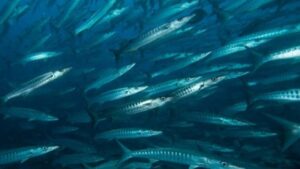
While the youngest hunt in groups surrounding the prey in order to close any possible escape route, the adult individuals, thanks to their acute eyesight, identify the prey from afar and study it keeping a certain distance, and then run over it at full speed ( easily exceed 40km / h!) when the right moment arises. The diet of barracudas is mainly based on small over-the-counter fish and cephalopods, although adult individuals do not disdain larger prey such as trevally and groupers.
Three interesting Barracuda Facts!!
1)The Largest barracuda caught was over 6 feet in length
Thomas Gibson from the USA caught a Guinean barracuda weighing 46.40 kilograms (102 pounds 4 ounces) which measured around 2 metres (6 feet 6 inches) on 14 February 2013 in Angola.
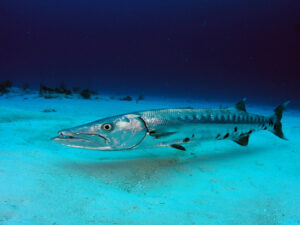
2)They can hide in plain sight.
Barracudas are countershaded; with darker colours on the top half of their bodies and lighter shades on their bellies, they are camouflaged against both the ocean below them and the surface above.
Their silvered flanks help to conceal them further, and their snake-like bodies create an extremely small profile when viewed head-on; from the point of view of their prey, the barracuda is virtually invisible as it approaches. Each barracuda has unique patterning.
3)They can be poisonous to humans.
People around the world regularly catch and eat barracuda, but larger species are not safe for human consumption because their bodies collect toxins from their prey in a process called bioaccumulation.
They are known to contain high concentrations of ciguatoxins – naturally occurring compounds manufactured by algae – but also large amounts of heavy metals, a large proportion of which are released into the ocean by humans.
Aside from a few marine predators, perhaps the greatest danger to barracudas is humans. In addition to habitat destruction, climate change and pollution, sport fishing is another threat.

